#Tracey Deer
Text

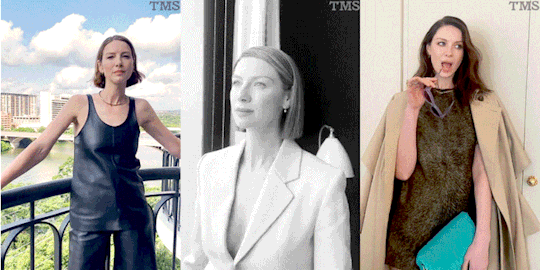
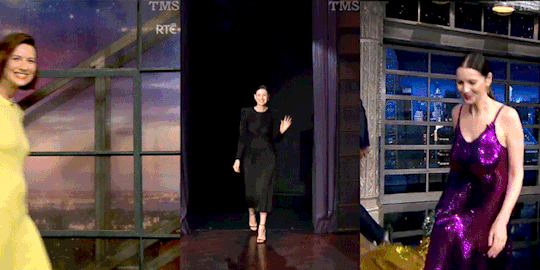
"We start with what's on the page and we build from there. She came in with a bunch of ideas that just made the scene better. What she brings every single day is perfect." —Director Tracey Deer
~ Happy Birthday, Caitriona Balfe ~ October 4, 1979
Actress, Producer, Director, Philanthropist, World Child Cancer Patron
#caitriona balfe#claire fraser#outlander#outlander bts#tracey deer#happy birthday caitriona balfe#my ray of sunshine#my edit#atx festival#good morning america#paris fashion week#rte late show#the late show with james corden#the late show with stephen colbert
209 notes
·
View notes
Text



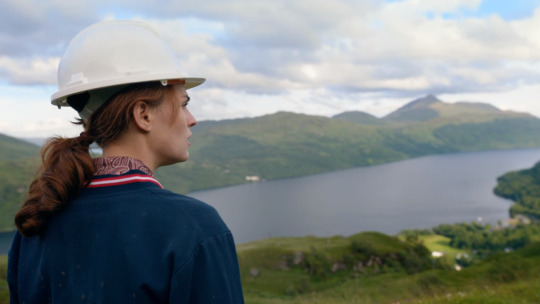
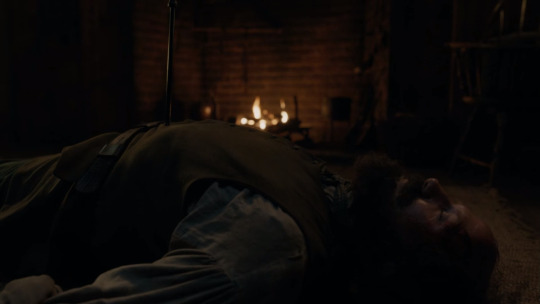

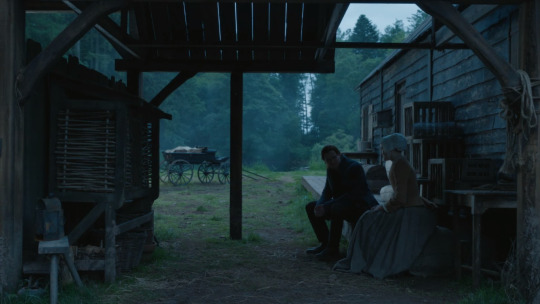

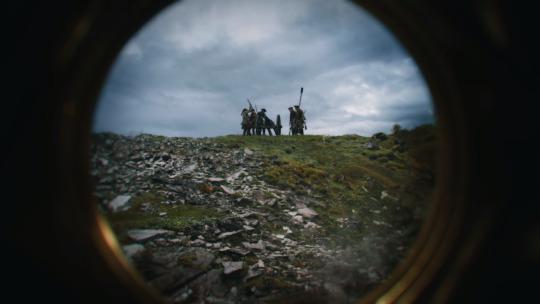

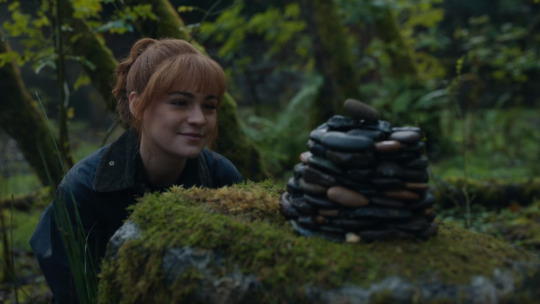
**Shots of the Episode**
Outlander (2014)
Season 7, Episode 5: “Singapore” (2023)
Director: Tracey Deer
Cinematographer: Alasdair Walker
#shots of the episode#outlander#outlander s7#outlander season 7#outlander singapore#singapore#starz#2023#diana gabaldon#tracey deer#alasdair walker#ronald d. moore#sophie skelton#richard rankin#sam heughan#brianna x roger#2023 tv#roger x brianna#charles vandervaart#romance#1700s#period romance#cinematography#stills#tv stills#1.78:1#screencaps#screenshots
21 notes
·
View notes
Text
11 notes
·
View notes
Text
BEANS:
Native girl witness
Racism over protest
Involved with wrong crowd
youtube
#beans#random richards#poem#haiku#poetry#haiku poem#poets on tumblr#haiku poetry#haiku form#poetic#biopic#kiawentiio#Rainbow Dickerson#Violah Beauvais#paulina alexis#d’pharaoh woon a tai#joel montgrand#Taio Gelinas#Brittany LeBorgne#Tracey Deer#Meredith Vuchnich#Kelly Beaudoin#indigenous rights#racism#canadian film#Jay Cardinal Villeneuve#Dawn Ford#Youtube
0 notes
Text
Farha: Al-Nakba Depicted in Harrowing Detail
During turbulent times, one might turn to art to better understand the world. For many Palestinians, their stories have been suppressed until Farha, the first film to depict the early stages of Israel's formation. Give it a watch and read this review.
Have you ever heard of the Al-Nakba, the initial catastrophe displacing over seven hundred thousand native Palestinians from their homes to create the modern nation-state of Israel? There is a distinct possibility you have not, considering that images of Israeli soldiers performing war crimes remain a sensitive subject to Israel and their allies. Yet more people are becoming aware of the event,…

View On WordPress
#Ashraf Barhom#Beans#Coming of Age#Contemporary Releases#Darin J. Sallam#Drama#Farha#Film Reviews#History#Karam Taher#Rachelle Aoun#Tala Gammoh#Tracey Deer#War
0 notes
Text

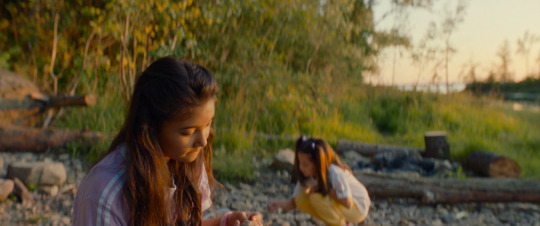



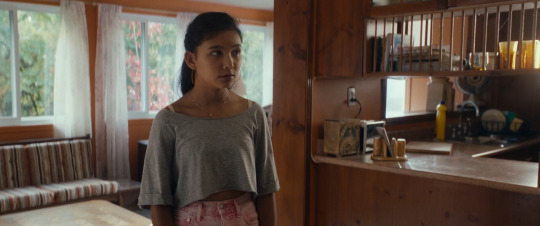
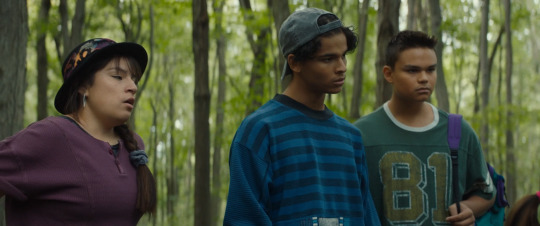
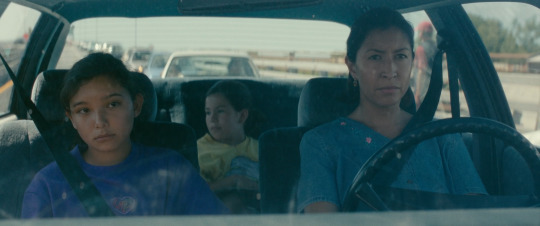



Beans (Tracey Deer, 2020)
cinematography: Marie Davignon
#Kiawentiio#Rainbow Dickerson#Paulina Alexis#beans#tracey dear#indigenous#mohawk#d'pharaoh woon a tai#female filmmakers#female directors#female directed films#women in film#female screenwriters#native people#indigineous people
56 notes
·
View notes
Text
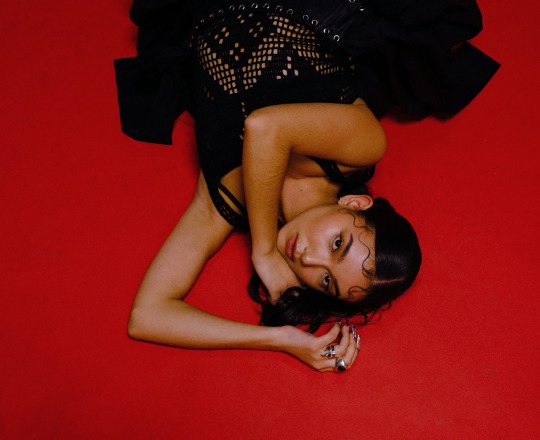
ONE NAME IS ALL KIAWENTIIO NEEDS
The mononymic Mohawk actress stars in the highly anticipated new adaptation of “Avatar: The Last Airbender,” one of Netflix’s most expensive series ever. It’s a role she’s been preparing for almost her entire life.
At first, it’s a ripple. Hovering drops rising from a puddle soon cluster into a faster-moving, levitating stream that swirls into an orb of water floating over a young woman. The focused motion of her hands control this aquatic flow. In the lore of the beloved animated series Avatar: The Last Airbender, the ability to manipulate the elements is known as “bending” and wielding this power is Katara, a fan-favorite of the franchise’s core characters. In this instance, she’s no longer animated, but rather living and breathing in Netflix’s recent adaptation of the cult show, as played by Kiawentiio, the 17-year-old actress and singer-songwriter from the Mohawk Nation at Akwesasne. For young Indigenous audiences, it’s a powerful moment seeing what was always an Indigenous-coded character, dynamic and independent, brought to life by an Indigenous actor. Her interpretation of the heroine is both true to its source material and grounded in an undeniable sense of Indigeneity, notable in the scenes of Katara’s survival of the violence inflicted upon her tribe and their later resistance to its recurrence. Free from the confines of Western film tropes or the expected relegation to secondary and background roles, Kiawentiio’s Katara is unprecedented. She’s both of this world and beyond. A sign of things to come.


There’s a balletic velocity to Kiawentiio when she arrives at her photo shoot, a certain sense of purpose and the pull of a trajectory toward something just off of the horizon. She’s traveling with her mother Barbara, who works in their community’s cultural restoration efforts, and her father Corey, a volunteer firefighter and building inspector for their tribe. They beam with pride as they watch her and recount the recent stops she’s had on the show’s busy press tour. In the dressing room, she smiles while reviewing pieces she requested from Indigenous designers Josh Tafoya and Karen Francis. It’s like witnessing someone coming into alignment, a new possibility realized. She says, “It feels like it’s not real, to be honest. Sometimes it feels like I’m living this fantasy life or living someone else’s life, especially with where I come from.”
The evening prior, Kiawentiio walked the red carpet for Avatar’s Los Angeles premiere in a stunning ensemble, also fashioned by Indigenous designers: an ice-blue duo chrome taffeta skirt by Evan Ducharme, accented by a hand-beaded corset from Tasha Marie, and jewelry by BYCHARI and Dean Davidson. The look, both in color and from the corset’s beaded wave design, is a subtle nod to Katara’s Southern Water Tribe in the show. Kiawentiio grew up watching the original series, which makes this all the more surreal. “For filming, we were in British Columbia for almost a year and stepping out of that was really kind of like a culture shock,” she explains.
It’s not lost on her that this is her moment, one that she’s balanced with both grace and aplomb, but also a time to reflect on all that’s led her to this point. From her beginnings as a guest star a mere five years ago on the Canadian series Anne With an E, to playing the title character in Tracey Deer’s debut feature Beans in 2020, and more recently appearing in Peacock’s Rutherford Falls and Marvel’s What If…?, Kiawentiio’s career has been nothing short of meteoric. In many ways it mirrors the creative boom of Indigenous-led and centered television in the last half-decade. That a young, Indigenous actor is now one of the leads in a $120 million Netflix production—one of its most expensive to date—that also happens to be an adaptation of what is considered to be one of the best animated series of all time, is as much of a cultural tipping point as it is an expectation rewriting itself. And Kiawentiio is at its precipice.
Over the phone, Kiawentiio discussed this moment and what it means to her.

How did you connect with the Indigenous designers you’ve chosen to work with recently?
One of the looks was Josh Tafoya, a fashion designer out of New Mexico. I actually got to meet him, I think it was two years ago now. He also works closely with 4Kinship, which is also a really cool Indigenous vintage brand. For the red carpet, I got to work with two Indigenous designers to custom-make this very beautiful gown. Tasha Marie Designs was the designer that beaded my corset and Evan Ducharme made my skirt, and they both just came together so beautifully. I love how it turned out, truly.
Does anyone in your family do beadwork? Is it something that you grew up around?
Yeah, my mom beads. She doesn’t sell any of her work, which she should. My sister also beads. I grew up beading here and there, but it was never something that I continued. I think out of all my creative outlets, it got the short end.
My mom does some beadwork too, so I know it’s super meticulous. How do you approach style outside of professional spaces, like the red carpet? What are you drawn to?
I feel like my style has been changing a little recently. I like really baggy pants. I haven’t really worn jeans in a while, but I wanted to up my whole closet recently. I’ve been wanting to get more color because I tend to lean on black a lot and earth tones in general. It also depends on what time of year, ’cause sometimes in the summer I like giving off that skateresque vibe.
I like a lot of men’s fashion too. I’ll have long shorts that are past my knees and huge T-shirts on and be like why do I look like a boy? Oh, I’m dressed like this. Doing a lot of this press and having this part of my life really lets me tap into my feminine side.
You grew up in Akwesasne?
Mm-hmm.
When you’re on set and you’re in front of the camera, how do you become this character that you grew up with?
It was honestly really crazy, like that first time we had that transition. Growing up, seeing this character all of the time and idolizing this character almost, and then to have that transformation and look in the mirror and see yourself as that person. It’s like whoa, whoa, whoa. But honestly, Katara and I have a lot of similarities in our personalities. And I feel like it’s kind of a double-edged sword in that it becomes easy to become them. But because there are some similarities, it’s hard to differentiate yourself from the character and keep those things separate.
Were you able to draw on or tie some of your own Mohawk roots? It was great talking to your parents too and hearing about the impact of their own work, your mom’s work in cultural restoration and your dad’s work with your tribe. I’m curious if any of that went into how you shaped this role, especially because Katara is a very Indigenous-coded character.
I think with my Mohawk roots and what my parents have done my whole life, I feel like it has shaped me as a person. With that, I can’t help but take that to every role that I play in the past and in the future, too. So, I feel like my Kanienʼkehá:ka roots will always be there with me in every character that I have the pleasure to portray. I haven’t said this before, but really, I truly do owe everything that I have to my mom and my dad.
What was some of your preparation for this role?
We binged the original show. I think I watched it twice and then went into specific scenes for Katara’s character and her mindset, and then also her bending. Every time we had a fight or we wanted to re-create something from the animated show, we were watching clips of Katara’s bending and that also was really helpful for me.



What’s it like being a young actor now in the age of TikTok and social media?
I think it’s a delicate balance. I feel like in this age, it’s really easy to get caught up in what people are saying, good or bad. Because it’s just so accessible. It’s really important to be able to protect yourself from that. With the show dropping, I will have to find ways to protect myself from the outside and what they are saying, even though I have this sense of wanting to look, wanting to know what the public thinks. That’s how I’ve been this whole time leading up to the show coming out. I want to be and I try to be an open-minded person. So, with what people are saying, I like to look at it just plainly, not trying to hurt my own feelings or anyone’s feelings. I like to have this information and [take] it as a learning type of thing.
With the show dropping and how massive the scale is, there is going to be so many opinions, so many thoughts. So, I feel like it’ll be OK if I just kind of let this one go for a while and revisit when I’m in a more stable place.
I think that’s healthy. On the flip side, for somebody coming up in your generation, specifically somebody Indigenous working in this industry, what’s it like to watch actors like Lily Gladstone or Kawennáhere Devery Jacobs lead the way?
It’s so beautiful. It’s beautiful to see all these amazing strong Indigenous actors. A lot of our stories have been trying to break through for a long time. To now be able to see it in multiple people that come to mind immediately with Reservation Dogs, Killers of the Flower Moon, and Echo, all of these things are so amazing to be able to see in the industry. It’s come so far even from when I was little.
I think one of the main reasons that I was drawn to Avatar: The Last Airbender growing up was being able to have a strong brown role model in Katara. She was one of not many. I think representation, even in that time, was so scarce and rare. So, to be able to carry the torch that’s been passed down for a long time now and be able to light multiple fires and lead the way for the generations coming is so important. I am truly blessed to be alongside all these incredible Indigenous actors leading the way.
Has there been a particular performance by another actor that’s had an effect on you like that? Somebody that you saw growing up, or are even watching right now that’s a model for your career?
The only person that I could think of is Zendaya. I grew up watching her on K.C. Undercover and Shake It Up, when she was just a kid star on Disney. Another thing that is so inspiring to me is her fashion sense. I love how she doesn’t always step out to all these different events. But when she does, everyone knows it and she’s making a statement. It’s just really inspiring to me, her fashion sense and her choices. Also, to have a single name that’s different from what you always hear is also something that we relate to and is inspiring to me.
What is it like having this be something of a new normal for a Native actor where you’re not necessarily just relegated to these roles in westerns? That’s something that people have been dreaming of. It seems like it’s a totally open future now too. What does that feel like?
It feels so surreal. Honestly, sometimes I get the sense of guilt. There are so many people that fight for the same spot. Sometimes, I have to remind myself how hard I’ve worked for things because it sometimes can feel like maybe someone else deserved this. You know that type of feeling?
But I’m lucky enough to have an amazing support group. To be able to be in this position that I’m in now is so incredible. Something that my dad always told me that we’re always where we’re supposed to be. I think that’s something if I had the chance to tell other Indigenous people, or just people in general, especially with actors and acting—you’re always where you’re supposed to be. If you didn’t get this job, it was for this reason. If you feel like you really wanted this thing but it didn’t end up happening, it was because this thing was waiting for you. And I feel like a lot of times, fate works in really funny ways. Of course, I was auditioning for so many things before Avatarhappened. I just can’t imagine if I had landed a different role and then wasn’t able to go out for this. So, it’s so funny how the universe works in crazy ways to make things align perfectly.

#natla#atla#netflix avatar#avatar the last airbender#netflix atla#avatar netflix#atla netflix#kiawentiio#interview#photoshoot#ssense
18 notes
·
View notes
Photo
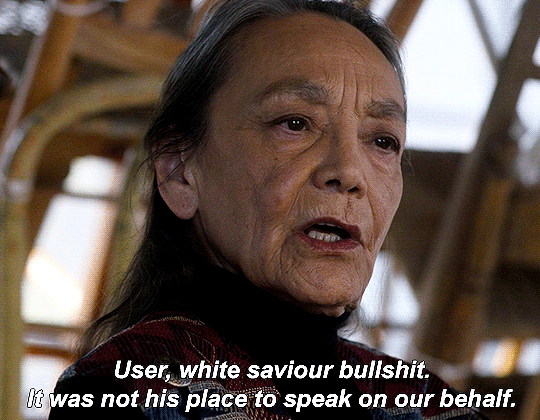

And, you know, Marc wanted to build a memorial for the survivors.
Yeah, I know he wanted, to make it all about him and his guilt.
THREE PINES 1.03 the cruellest month: part 1 dir. Tracey Deer
#tvedit#three pines#threepinesedit#tantoo cardinal#first nations#canada#alfred molina#bea mayer#armand gamache#s01#1.03#the cruellest month#my edits#gifs
87 notes
·
View notes
Text
Beans Critical Analysis
youtube
Beans (2020), directed and co-written by Tracey Deer, is a semi-autobiographical film that follows Tekahentahkhwa (“Beans”) during the Oka Crisis (July through September of 1990). This violent conflict between a group of Mohawk people and the town of Oka in Quebec, Canada, in a way, began centuries before when the Mohawk (the most easterly section of the Iroquois Confederacy, located in southeast Canada and northern New York state) first settled in the area in the late 1660s1. However, this specific event arose because “The Pines” (indigenous land) and a nearby Mohawk cemetery were to be cleared to expand a golf course and build new condos. While not all residents of Oka supported the plan, the mayor refused to discuss and hear from the people. By the end, the crisis was successful in halting the development, but resulted in two killed and over one hundred wounded.
Tracey Deer, who was born and raised in Kahnawake (one of the Mohawk communities in the region of Oka), was 12 when she lived through this crisis. In the grand scheme of things, there are very few who could be entrusted to create a film on this specific event, and luckily, Deer is one of those. This won’t be a tale of the white savior entirely misunderstanding and misrepresenting colonization conflict! A nice change of pace.
Critical Race Theory
Critical Race Theory is at the heart of this film. It’s centered around an undeniably racialized conflict: First-Nations (and their supporters) vs. Colonizers. But, as mentioned previously, this is co-written and directed by a Mohawk woman who grew up in this community and experienced this conflict first-hand (the other writer is Meredith Vuchnich and it seems as though she is not indigenous). As we all know, relations between indigenous populations and settlers around the world are violent and oppressive, to say the least. Speaking for myself, I am most familiar with the North American history and from what I know, it is relatively representative of global indigenous genocide. So, what is so special about this film is that it is a coming of age story that takes place during a widely unrelatable historic moment and proves that the fight for sovereignty is not over. We’ve all been Beans: should she go to the private school she was accepted to? Are her new friends good for her? But also will her community succeed in the protection of their land? Deer sets the story during a somewhat recent conflict, proving the battle for sovereignty is not over as some might like to believe. In their article “Colonialism, Racism, and Representation: An Introduction,” Stam and Spence write that “[a]n ethnocentric vision rooted in North American cultural patterns can lead, similarly, to the ‘racialising’, or the introjection of racial themes into, filmic situations”2. I would argue that Beans is a functional execution of this idea: Tekahentahkhwa is just a pre-teen coming into a difficult world as she witnesses Canadians and their government fight against her existence and right to save her land. Stam and Spence also write specifically about indigenous populations, arguing that the “attitude toward the Indian is premised on exteriority”2 and the “besieged wagon train or fort is the focus of our attention and sympathy, and from this center our familiars sally out against unknown attackers characterized by inexplicable customs and irrational hostility”2 (2009, 759). While this is true in wider film history, I would argue that it is only partially true in Beans because Deer brings us onto the reservation and into Beans’ family. We’re not viewing the Mohawk community from the outside and watch them be victimized by white Candians. The viewer does not pity them and is more familiar with the attackers. However, it is clear that the hostility of the Canadians is irrational and wildly disproportionate (considering there should not have been a conflict in the first place because they were proposing to steal even more Mohawk land). Deer deftly navigates a relatable coming of age 90s story and the experience of indigenous women and populations in modern history.
Montage Theory
Another theoretical approach that this film utilizes is the montage. I love a good montage, especially if it makes use of archival footage of historical events, and Deer does this flawlessly in Beans. She intercuts the narrative with footage of the actual protests to provide context and transition during the film. If we follow Sergei Ėjzenštejn’s Soviet Montage Theory, I would argue that Deer employs a metric overtonal, not just tonal, montage, because “movement is perceived in a wider sense”3 and it’s “based on the characteristic emotional sound of the piece,”3 but “it is distinguishable from tonal montage by the collective calculation of all the piece’s appeals”3. Furthermore, these archival montages are “capable of impelling the spectator to reproduce the perceived action, outwardly,”3 meaning Deer is looking to evoke an emotional reaction as the viewer is confronted with undeniable, clear evidence of the vitriol and hatred of the white Canadians. Through it direct confrontation, Deer sets a emotional tone, lest the viewers forget that Beans is not simply a coming of age film: Tekahentahkhwa and her family are battling a centuries-long genocide, something that most pre-teens are unfamiliar with. The structuring and score of almost every single montage is identical, creating an overarching tone conveyed by her. Many of these montages are accompanied by the newscasters’ voiceovers and a tight, quick, string-heavy score, almost reminiscent of a horror film, which I believe sets the consummate haunting tone and reveals the “psychological turmoil of [the] characters”4.
Beans is an amazing movie about an event that I, hate to admit it, had never heard of. I loved how Deer balanced a coming of age story with a violent crisis that is simply one event in a long history of colonial oppression by white settlers. Viewing this film through the lenses of Critical Race theory and Soviet Montage theory enhances her storytelling abilities and allows the viewer to melt into Beans’ world.

Sources:
Ėjzenštejn, Sergei. “Methods of Montage.” In The Film Form: Essays in Film Theory, translated by Jay Leyda, 72-83. New York: Harcourt Brace Jovanovich, 1949.
Melinda, Meng. “Bloody Blockades: The Legacy of the Oka Crisis.” Harvard International Review, 30 June 2020. https://hir.harvard.edu/bloody-blockades-the-legacy-of-the-oka-crisis/.
Pudovkin, Vsevolod. “From Film Technique [On Editing].” In Film Theory and Criticism: Introductory Readings, edited by Leo Braudy and Marshall Cohen, 7-12. New York: Oxford University Press, 2009.
Stam, Robert, and Louise Spence. “Colonialism, Racism, and Representation: An Introduction.” In Film Theory and Criticism: Introductory Readings, edited by Leo Braudy and Marshall Cohen, 751–66. New York: Oxford University Press, 2009.
5 notes
·
View notes
Text
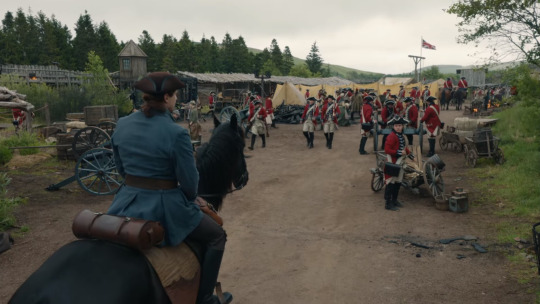
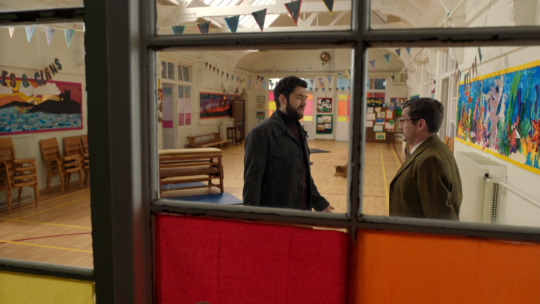
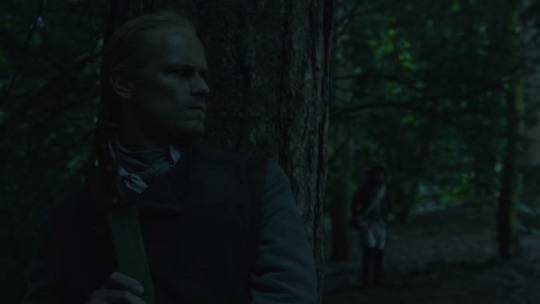

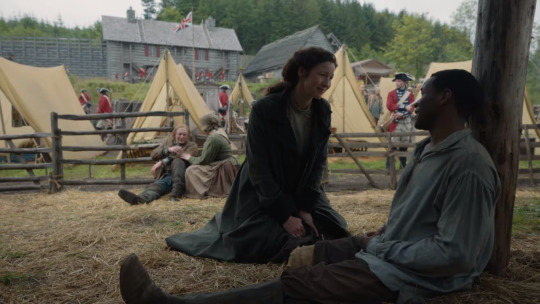





**Shots of the Episode**
Outlander (2014)
Season 7, Episode 6: “Where the Waters Meet” (2023)
Director: Tracey Deer
Cinematographer: Alasdair Walker
#shots of the episode#outlander s7#outlander#outlander season 7#starz#outlander starz#where the waters meet#2023#tracey deer#alasdair walker#diana gabaldon#sam heughan#catriona balfe#richard rankin#jamie x claire#claire x jamie#2023 tv#cinematography#screencaps#romance#fantasy#stills#tv stills#1.78:1#1700s#1700s fashion
5 notes
·
View notes
Note
you're a swiftie, right? pokeani characters as taylor swift lyrics? or ships?
Ok, I went with ships (though I could write an essay on why Drew's song would be The Archer and why Misty’s would be Who I’ve Always Been), and I tried to include all the ones I could think of, whether they're my thing or not! Little bit for everyone, you know?If anyone wants my reasoning and analysis of WHY I chose songs or lyrics PLEASE ENABLE ME. I am but a deer tick in the long grass waiting for an unsuspecting victim to brush past and enable autism mode for me. This is no order at all, just random tbh. I chose the most relevant lyrics. Sometimes that’s three lines. Sometimes it’s half the song. The more or less lyrics does not equate to my opinion on the ship, some just felt more fitting than others. I know I’m missing stuff, lmk if you want me to do one that isn’t here. Anyways, let's get into it! This is hella long by the way.
Appealshipping (Dawn x Zoey)- Seven (sapphic bop idgaf argue with the wall)
“Sweet tea in the summer, cross your heart, won’t tell no other”
“Your braids like a pattern, love you to the moon and to saturn
Passed down like folk songs, the love lasts so long”
Gary x Tracey (Oakshipping? Is that it?)- Welcome Distraction (unreleased, on youtube)
Love’s a little messy and you are too, right now I’m scared of the both of you
-skipped lyrics-
You’re the last thing I needed today
And I don’t know where I lost control and couldn’t take it any longer,
It must have been somewhere between your smile and the way you say my name
And I can’t win, so I give in, the more I fight it just gets stronger
You’re an inconvenient kind of satisfaction, a welcome distraction
Gone and spilled my coffee trying to get to the phone, cause it might be you, you just never know
Can’t talk to my friends without you coming up, it’s even kinda cute the way you cuss
I wrote your name down a hundred thousand times, ‘cause it looks so good right next to mine
You’re the last thing I needed tonight
Palletshipping (Ash x Gary)- A few very good options but I settled on Paper Rings (almost chose King of my Heart though) (also almost chose Tim McGraw because of the lake imagery and lakes seem to be their thing, from what I’ve gathered from my mutuals)
The moon is high like your friends were the night that we first met
I went home and tried to stalk you on the internet
Now I’ve read all of the books beside your bed
The wine is cold, like the shoulder that I gave you in the street
Cat and Mouse for a month or two or three
Now I wake up in the night and watch you breathe
Kiss me once because you know I’ve had a long night
Kiss me twice because it’s gonna be alright
Three times, cause I’ve waited my whole life
I like shiny things but I’d marry you with paper rings
Darlin’, you’re the one I want
And I hate accidents except when we went from friends to this
You’re the one I want in paper rings, in picture frames, in all my dreams, you’re the one I want
Satogou (Ash x Goh)- It’s Nice to Have a Friend
School bell rings, walk me home
Sidewalk chalk covered in snow
Lost my gloves, you give me one
‘Wanna hang out?’ ‘Yeah, sounds like fun’
Video games, you pass me a note, sleeping in tents, it’s nice to have a friend
Light pink sky, up on the roof
Sun sinks down, no curfew
Twenty questions, we tell the truth
You been stressed out lately? Yeah, me too
Something gave you the nerve to touch my hand, it’s nice to have a friend
Church bells ring, carry me home
Rice on the ground looks like snow
Call my bluff, call you babe
Have my back? Yeah, everyday
Feels like home, stay in bed the whole weekend-it’s nice to have a friend
Shigegou (Gary x Goh)- Cowboy Like Me
“You asked me to dance, but I said ‘dancing is a dangerous game’
Oh, I thought, this is gonna be one of those things
Now I know I’m never gonna love again
I’ve got some tricks up my sleeve
Takes one to know one- you’re a cowboy like me
-skipped lines-
Now you hang from my lips like the gardens of babylon
With your boots beneath my bed, forever is the sweetest con
Shigesatogou (Ash x Gary x Goh)- Jump Then Fall
I like the way you sound in the morning, we’re on the phone and without a warning I realize your laugh is the best sound I have ever heard
I like the way I can’t keep my focus, I watch you talk, you didn’t notice
I hear the words, but all I can think is ‘we should be together’
Every time you smile, I smile and everytime you shine, I’ll shine for you
Woah, i’m feeling you, baby
Don’t be afraid to jump then fall, jump then fall into me
Baby, I’m never gonna leave you
Say that you wanna be with me, too
‘Cause I’mma stay through it all, so jump then fall
A rarepair/crackship for you all (I think two of you like it and follow me? I can vibe with it ngl)- Farawayshipping (May x Paul)- Ours
Elevator buttons and morning air
Stranger’s silence makes me want to take the stairs
If you were here, we’d laugh about their vacant stares
But right now, my time is theirs
Seems like there’s always someone who dissaproves
They’ll judge us like they know about me and you
And the verdict comes from those with nothing else to do
The jury’s out, but my choice is you
So don’t you worry your pretty little mind, people throw rocks at things that shine and life makes love look hard
The stakes are high
The water’s rough
But this love is ours
You never know what people have up their sleeves
Ghosts from your past gonna jump out at me?
-skipped lines-
And it’s not theirs to speculate if it’s wrong, and
Your hands are tough, but they are where mine belong
-skipped lines-
I love the gap between your teeth, and I love the riddles that you speak
And any snide remarks from my father about your tattoos will be ignored (you know Norman would HATE Paul)
Because my heart is yours
Pumpkinspiceshipping (Caroline x Delia)- Cornelia Street (specifically the Paris live acoustic though. Trust me.) (considered her cover of September by Earth, Wind, and Fire but that’s technically not a Taylor Swift song. Also people seem to hate that cover which makes me sad.)
We were in the backseat, drunk on something stronger than the drinks at the bar
‘I rent a place on Cornelia Street’, I say casually in the car
We were a fresh page on the desk, filling in the blanks as we go
As if the streetlights pointed in an arrowhead, leading us home
I hope I never lose you, hope it never ends
I’d never walk Cornelia Street again
That’s the kind of heartbreak time could never mend
I’d never walk Cornelia Street again
And baby, I get mystified by how this city screams your name
And baby, I’m so terrified of if you ever walk away
I’d never walk Cornelia Street again
Windows flung right open, Autumn air, jacket ‘round my shoulders is yours
We bless the rains on Cornelia Street, memorize the creaks in the floors
-skipped lines-
You hold my hand on the street, walk me back to that apartment-years ago, we were just inside
Barefoot in the kitchen, sacred new beginnings that became my religion
Pokeshipping (Ash x Misty)- Invisible String
“Time, curious time, gives me the blues and then purple-pink skies
Were there clues I didn’t see?
And isn’t it just so pretty to think all along there was some invisible string tying you to me?”
Egoshipping (Misty x Gary)- Gorgeous
“You should take it as a compliment that I got drunk and made fun of the way you talk
You should think about the consequence of your magnetic field being a little too strong
-skipped lines-
You’re so cool, it makes me hate you so much
-skipped lines-
And I’m so furious at you for making me feel this way, but what can I say? You’re gorgeous
You should take it as a compliment that I’m talking to everyone here but you
You should think about the consequence of you touching my hand in the darkened room
If you got a girlfriend, I’m jealous of her
But if you’re single, that’s honestly worse”
Ikarishipping (Paul x Dawn) (angsty. Sorry Ikarishippers who like fluff, but I don’t think there’s a ton of you here tbh so like we’re good) (I’m hella picky about Ikarishipping in general but this song fits imo. For a ship I don’t care for I have hella opinions on it apparently)
Are you really gonna talk about timing in times like these?
Let all your damage damage me? Carry your baggage up my street?
Make me your future history? It’s time
We’ve come a long way, open the blinds, let me see your face
You wouldn’t be the first renegade to need somebody
Is it insensitive for me to say, ‘get your shit together so I can love you’?
Is it really your anxiety that stops you from giving me everything, or do you just not want to?
I tapped on your window on your darkest night, the shape of you was jagged and weak
There was nowhere for me to stay, but I stayed anyway
You fire off missiles ‘cause you hate yourself, but do you know you’re demolishing me?
But then you squeeze my hand as I’m about to leave
-
And if I would have known how sharp the pieces were you’d crumbled into, I might have let them lay
Contestshipping- was stuck between like 15 songs because y’all know how I am about these two but I eventually landed on Treacherous. Almost chose Mine or Sparks Fly though. Still waiting for ethically sourced Speak Now.
Put your lips close to mine, as long as they don’t touch
Out of focus, eye to eye- until the gravity’s too much
And I’ll do anything you say if you say it with your hands- and I’d be smart to walk away, but you’re quicksand
This slope is treacherous
This path is reckless
This slope is treacherous-and I like it
I can’t decide if it’s a choice, getting swept away
I hear the sound of my own voice, asking you to stay
And all we are is skin and bone, trained to get along
Forever going with the flow, but you’re friction
-chorus-
Two headlights shine through the sleepless nights and I will get you alone-your name has echoed through my mind and I just think you should know that nothing safe is worth the drive
This hope is treacherous
This daydream is dangerous
This hope is treacherous
I like it
Ok ash/pokegirl ships are all down here since honestly except for my one pokeshipper friend I think most of you guys don’t care for these tbh highkey same but I can still appreciate and assign them a vibe. I don’t like cool ranch doritos but I’ll still eat them, you know?
Advanceshipping- I’d Lie (unreleased, which is a crime, it’s on youtube and better be on debut taylor’s version)
I don’t think that passenger seat has ever looked this good to me
He tells me about his night, and I count the colors in his eyes
He’ll never fall in love, he swears as he runs his fingers through his hair
I’m laughin’ cause I hope he’s wrong
And I don’t think it ever crossed his mind, he tells a joke, I fake a smile
-skipped-
He stands there then walks away, my god, if I could only say ‘I’m holding every breath for you’
Pearlshipping- Tim McGraw. Idk I don’t really get pearlshipping that much but I think the vibes are there with this song?????
He said the way my blue eyes shined put those georgia stars to shame that night
I said, ‘that’s a lie’
Just a boy in a chevy truck that had a tendency of getting stuck on backroads at night
And I was right there beside him, all summer long
Negaishipping- ‘Til Brad Pitt Comes Along (unreleased but I think it sums them up perfectly, even platonically)
Do you remember the day I leaned up against your car? And it started rolling down the street
You screamed and ran after it and tried to open the door and it ran over your foot and I was too busy laughing on the ground to see it
-skipped-
Do you remember the time we watched Carrie and you said it reminded you of me?
And I threw the remote at you and you said, ‘my point exactly’
-skipped-
You call me lucky ‘cause I lose everything, but I swear I’d be careful with it if you gave me a ring
Amourshipping, which. no comment-Your Anything
I could be your favorite blue jeans with the holes in the knees in the middle of the top drawer
I could be a little beauty queen, just a little out of reach, or the girl living next door
I’ll be your angel giving up her wings, if that’s what you need, I’ll give anything to be your anything
#ignoring the fact that 'you're a swiftie' is fighting words#/j#now tell me why I had fun analyzing ikarishipping for this#like I think it's a ship usually done poorly but there's some good fucking angst potential there#yall have no idea how many songs I had to whittle through to decide on contestshipping#SO MANY#I almost went with dancing wiht our hands tied#but figured that my interperetation of it for contest was too in-my-own-head#That song is actually what inspired morning after melancholy for me#I wrote that fic in like. three sittings over the span of ten hours with that song and so it oges on repeat#reputation is SO GOOD for when I want to lean into a more secretive relationship sort of thing#rep is one of my favorite albums of all time ngl#do I really want to tag all of these?#sigh i guess so#taylor's tag#appealshipping#oakshipping#hoping that's the right name for that and not a petalburgshipping situation because ick#palletshipping#shigegou#shigesatogou#farawayshipping#pumpkinspiceshipping#pokeshipping#egoshipping#ikarishipping#contestshipping#advanceshipping#pearlshipping#satogou
13 notes
·
View notes
Text
Josephine Decker: Madeline's Madeline, Shirley, Colletive: Unconscious
Nida Manzoor: Polite Society, Lady Parts
Elle-Máijá Tailfeathers & Kathleen Hepburn: The Body Remembers When the World Broke Open
Raven Jackson: All Dirt Roads Taste of Salt, A Guide to Breathing Underwater
Juliana Rojas: Good Manners, Necropolis Symphony
Issa López: Tigers Are Not Afraid, True Detective: Night Country
Hélène Cattet: Amer, The Strange Colors of Your Body's Tears, Let the Corpses Tan
Rayhana Obermeyer: I Still Hide to Smoke
Savanah Leaf: Earth Mama, My Heart Still Hums
Michelle Garza Cervera: Husura: The Bone Woman
Tracey Deer: Beans, Mohawk Girls
Konkona Sen Sharma: A Death in the Gunj
Jennifer Phang: Advantageous, Half-Life, Foundation
Kim Bo-ra: House of Hummingbird, The Recorder Exam
So Yong Kim: Treeless Mountain, In Between Days, Halt and Catch Fire, Room 104
A.V. Rockwell: A Thosand and One, Feathers
Rungano Nyoni: I Am Not a Witch
Hong Sung-eun: Aloners
Thea Hvistendahl: Children of Satan
Amy Seimetz: She Dies Tomorrow, Sun Don't Shine
Anita Rocha da Silveira: Medusa
Danielle Krudy & Bridget Savage Cole: Blow the Man Down
Nyla Innuksuk: Slash/Back
Mimi Leder: The Leftovers
Cameron Holly Dexter: The Recipie
Lauren Wolkstein: Dead Ringers (miniseries), Collective: Unconscious
Maya Newell: In My Blood It Runs, Gayby Baby
Celine Held: Topside, Caroline, Servant
Kier-La Janisse:
Farah Nabulsi: The Present, The Teacher
Sandi Tan: Shirkers
Petra Costa: Elena
Sara Kiener: The Shawl
Alice Birch: Dead Ringers (miniseries), Lady Macbeth (screenplay)
Lina Soulalem: Their Algeria, Bye Bye Tiberias
1 note
·
View note
Text
BEANS, Tracey Deer
Directed by Mohawk-Canadian filmmaker Tracey Deer, BEANS(2020) explores the 1990 Oka Crisis at Kanesatake through the eyes of Tekehentahkhwa (nicknamed "Beans"), a 12 year old Mohawk girl. The movie offers a deeply intimate and personal approach to the conflict between non-Natives and the Mohawk community. The events are shown in a way that is honest and real, highlighting the struggles and hatred that the community had to endure. Even though most people in Quebec are aware of the Oka Crisis up to a certain extent, we (as a country, a province, a government, a culture) have a tendency to sweep these types of events under the rug, hiding the ugly truth in order to preserve our image. The movie doesn't shy away from showing the truth, instead it fully embraces the reality of racism and violence the Mohawk community survived through.
I think the scene in the movie that stood out the most to me was the one in the car, as Beans, her mother, and her sister, are driving out of the reserve. It is definitely one of the more brutal scenes in the movie. There is a real sense of fear and panic as they're driving through a sea of people, most of them throwing rocks at the passing cars. The camera moves from one face to the other, alternating between the crying women and children, and the angry mob. The policemen are standing there, doing absolutely nothing, and it is the most infuriating thing. This is a scene that makes you angry. It is full of emotion, pain, fear, and anger. The violence pictured is not faceless or anonymous or distant, like it usually is. It confronts you directly, leaves no space for doubt of excuses. There is a right and a wrong and this scene makes you aware of it (if you weren't already from watching the rest of the film).
I think this is why this scene has stood out so much to me. It is challenging to watch but it is necessary in order to understand what happened to the Mohawk people. It was not just a small fight over a golf-course. It is a shameful moment in our province's history and it should be remembered as such.
0 notes
Text
Blog 12: Tracey Deer, BEANS
"If we want respect, we have to behave respectfully". The answer of the movie was right there. The setting of the moment was longer than sny of the other scenes, or at least, it felt longer. The wives running in front of their husbands and police guns took time to be placed. The scene had a large camera plan like a wallpaper and it lasted long enough to enjoy every details. The striking one was how some women were turned toward their side but also to the opposite one. They were speaking to both sides.
Right in the front of Beans was the solution and yet decided to follow a violent path which echoed to the bigger picture. The more they were trying to answer opposition with anger and violence, the more they were getting in trouble. This scene explained the whole situation. Both sides couldn't speak with anger because war was assured. However , despite seeing right before her eyes the evidence, Beans couldn't step out of her mentality because of the white citizens insulting her culture.
0 notes
Text
How Kiawentiio went from a ‘little arty kid’ to the star of Avatar: The Last Airbender
You know that classic actor’s arc, painstakingly building from bit parts to bigger roles, withstanding rejection and despair? Yeah, that’s not Kiawentiio’s story. The Mohawk Canadian actor was cast in the first thing she auditioned for, the hit CBC/Netflix series Anne with an E. Her next role was the title character in Tracey Deer’s wrenching, semi-autobiographical film Beans, followed by a gig on Rutherford Falls. And now she’s the second lead in a gigantic Netflix series, Avatar: The Last Airbender, a live-action reimagining of the beloved animated series (2005-08), shot mostly in British Columbia, arriving Feb. 22. And she’s only 17.
We meet via video call, and even on that flattening medium, Kiawentiio sparkles. (Professionally, she goes by that mononym, pronounced Guy-a-wen-di-jou.) She’s poised and friendly, without any child-actor posing. Now and again she glances over her shoulder into a corner I can’t see; turns out her mother is there for backup.
Her Anne with an E audition was a lark – or as Kiawentiio puts it, “It came out of nowhere and happened randomly.” Growing up on the Akwesasne reserve on Kawehno:ke (also known as Cornwall Island), which straddles the Ontario/New York State border, she was “the little arty kid in the corner, who stayed inside at recess to paint and draw,” and dreamed of going to art school. Her dad chanced upon an open casting call on Facebook, and they thought, might as well try it. She was the last audition of the day.
Landing Avatar: The Last Airbender, by contrast, required more of a campaign. As a kid, Kiawentiio loved the animated series – its environmental and spiritual themes, its thoughtful depictions of Asian and Indigenous cultures, the battle scenes of Benders wielding the four elements, “the character arcs, the sheer craftsmanship. It would fill me.”
So when she heard rumours a few years ago about a live-action reboot, she had a feeling she’d be right for Katara, 14, a novice Waterbender, the last in her Southern Water Tribe, traumatized by the world war being waged by the Fire Nation, yet undaunted and hopeful. Teaming up with Aang, the title character (played in the series by Gordon Cormier), she begins to realize her potential. Kiawentiio asked her agents to keep an eye out, “just in case the universe is listening.”
The audition, when it came, was veiled in secrecy – fake project and character names, disguised scenes, all via Zoom. After a month-long series of “adrenalin-pumping” chemistry reads with other actors, showrunner Albert Kim delivered the news: Yes, it was Airbender; yes, they’d been searching the world for their Katara; and yes, it was her. She and her family burst into tears.
With her co-stars, Kiawentiio spent six weeks at “bending boot camp,” where each learned the martial art their movements are based on: wushu for Firebending, tai chi for Waterbending, Hung Ga for Earthbending and Bagua for Airbending. They shot on a cutting-edge mix of green screens, practical sets – Kyoshi Village was built in a working quarry in Coquitlam, B.C.; Jet’s hideout was filmed at WildPlay, a ziplining park in Maple Ridge, B.C. – and volume stages, including the world’s largest LED video wall studio, a near-circle lined with 2,500 LED wall panels and 760 LED ceiling panels, at Canadian Motion Picture Park in Burnaby, B.C.
“That stage was warm,” Kiawentiio says, laughing. “Wearing Katara’s big blue parka, pretending to be in the Arctic while being in a microwave.” Watching the animated series come to life was “surreal,” she continues. “When you see Appa in front of you” – a flying beast that combines bison, hippo and manatee – “or even small things like my necklace – I remember being almost in tears.”
Canada’s Paul Sun-Hyung Lee (Kim’s Convenience) plays Iroh, brother to Fire Lord Ozai (Daniel Dae Kim); the actors playing Katara’s parents, Rainbow Dickerson and Joel Montgrand, also played Kiawentiio’s parents in Beans. But she didn’t get to hang out much – “I was in high school at the time, just trying to get through 11th grade,” she says. “Fun fact, I’ve never been to a first day of high school with my classmates. Every year I was doing something, travelling somewhere.” Now graduated, with a five-year option for possible future seasons, “I’m saving my next few years for the show and whatever else may come from it. But I plan on going to school in the future.”
Each of the four Airbender nations has real-world roots, including Omashu, Himalayan, Indonesian and Indigenous Arctic cultures; cultural consultants advised on folklore, history and mythology, as well as costumes, calligraphy and artifacts; and the series’ four directors are of Asian descent. That mattered, Kiawentiio says: “It’s 100-per-cent important to me that I represent where I come from, my people and my language. That comes with me to every character I portray.”
Her opportunity to embody authentic Indigenous characters has never been higher, as a spate of recent series attest: Reservation Dogs, Little Bird, Echo, True Detective: Night Country, the Yellowstone franchise. Lily Gladstone could well become the first Indigenous woman to win a Best Actress Oscar, for Killers of the Flower Moon. And Deer, Kiawentiio’s Beans director was an excellent role model: “Being able to see her be the leader, be so strong, opened my eyes to other things I can explore – directing, producing.”
But she doesn’t want portraying Indigenous characters to become its own kind of limit. “Those roles will always be at my root; they are what I can see myself in and relate to. That doesn’t have to be the end of what we’re capable of, though. We don’t have to just play the Indian friend, the Native guy. We can be just that doctor or teacher or lawyer, those regular roles. The days of just getting a role, and not The Native role, are still ahead of us.”
Now that Kiawentiio’s accidental career is skyrocketing, “it’s funny how weirdly normal it gets,” she says. “I understand how people can lose their groundedness. You’re in the air so much, how do you stay grounded? It’s helpful to keep my real life separate, with my family and friends, and have my work self be almost a persona.”
She’s always had a readable face, she realizes. “I can’t hide anything; it’s all in my eyes. But to be able to be in control of that to portray someone else is so interesting. My dad told me he’s never seen me light up the way I do when I’m on a set. That’s when I knew I should stick with it.”
#natla#atla#netflix avatar#netflix atla#avatar the last airbender#atla netflix#avatar netflix#kiawentiio#article#the globe and mail
11 notes
·
View notes